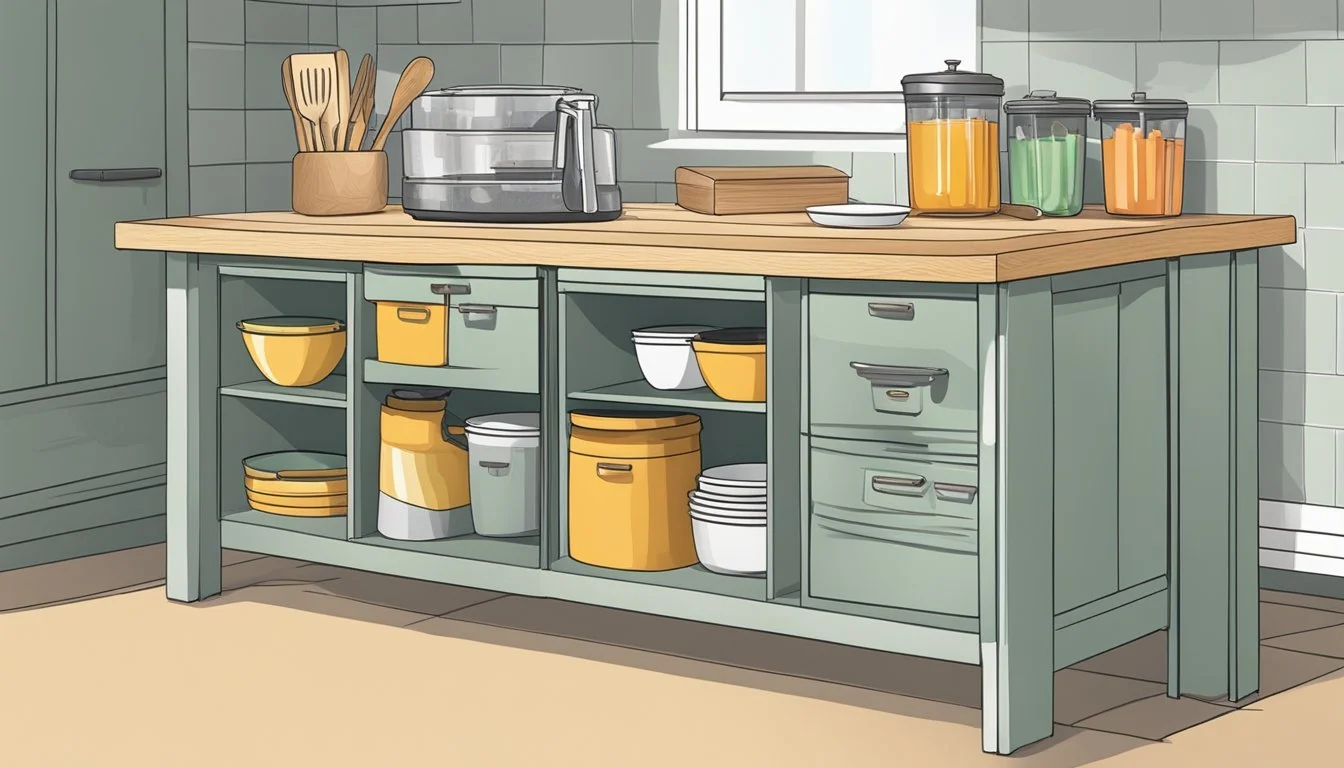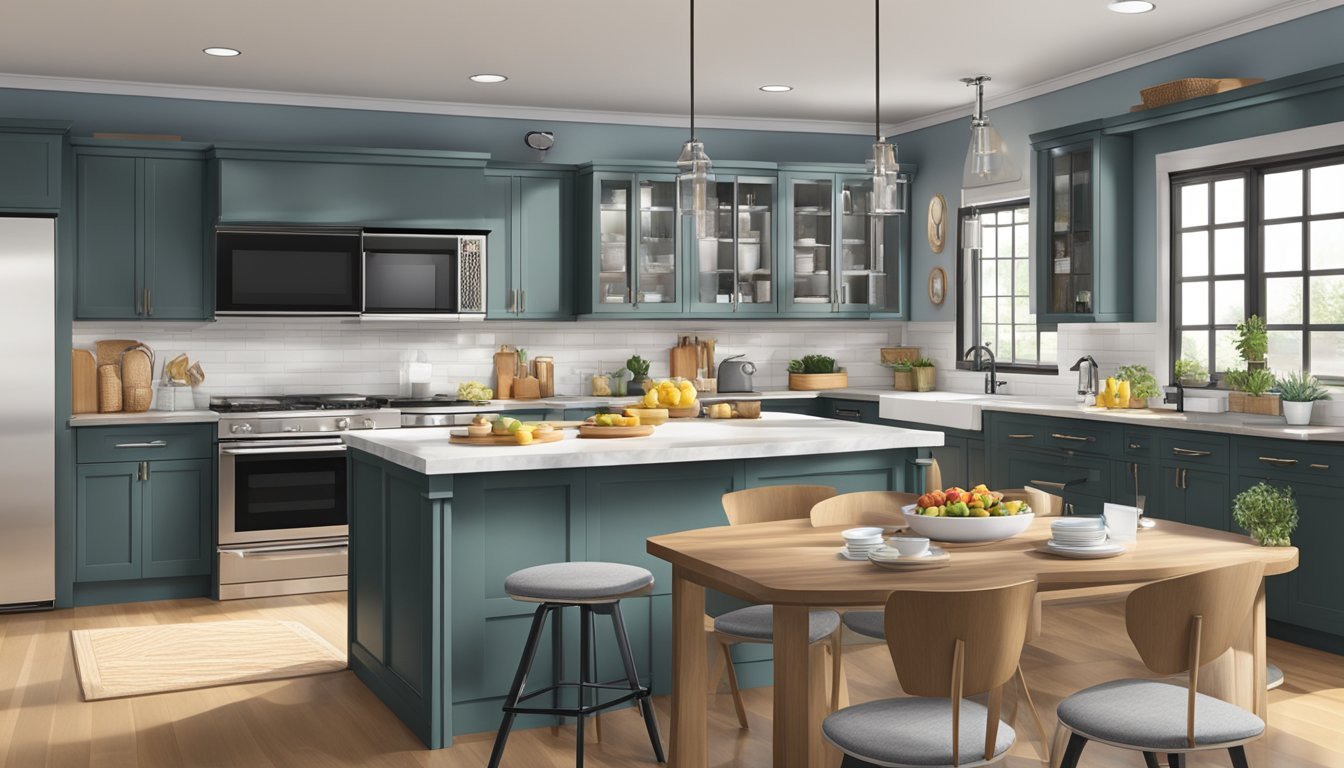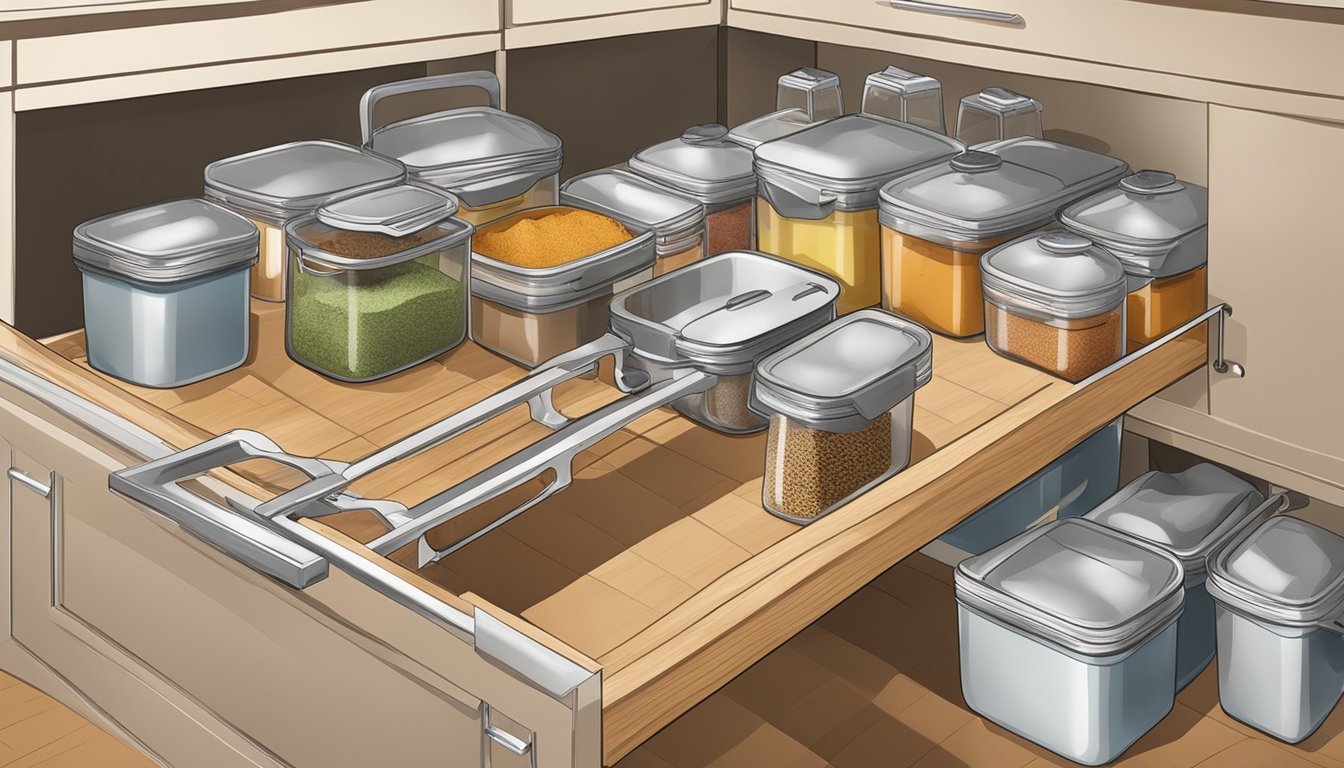How to Create an Organized Kitchen Island
Essential Tips for Clutter-Free Space
A kitchen island often serves as the centerpiece in modern kitchen design, providing a multifunctional space for food preparation, dining, and storage. Its central location makes it a catch-all area for household items, cooking utensils, and personal belongings. Keeping the kitchen island neat and organized not only enhances the efficiency of the space but also contributes to the overall aesthetic appeal of the kitchen. Regular maintenance and strategic organization can make a significant difference in how the kitchen functions and feels.
Creating an organized kitchen island involves a balance between functionality and style. To maintain an organized island, it is essential to establish a system that accommodates daily use while minimizing clutter. Practical solutions such as categorizing essentials, implementing storage solutions, and adhering to a regular cleaning schedule ensure that the island remains a practical and welcoming component of the kitchen. By prioritizing tidiness and developing simple organizational habits, homeowners can ensure their kitchen island fulfills its intended function without sacrificing design.
Designing Your Kitchen Island
Creating an organized kitchen island involves careful consideration of space, choice of appliances, and the selection of durable materials to ensure functionality meets aesthetic appeal.
Evaluating Space and Layout
The kitchen island should harmonize with the overall kitchen layout, enhancing both its utility and its role as a focal point. For small kitchens, islands need to be scaled appropriately to maintain traffic flow, generally with a recommended 3-4 feet of clearance around the island's perimeter. A well-sized kitchen island can serve as a multipurpose space for cooking, dining, and storage.
Choosing the Right Appliances
Incorporating appliances into a kitchen island calls for strategic planning. The most common appliances to consider include a sink, cooktop, dishwasher, and microwave. One should ensure that each appliance fits into the island's design seamlessly to uphold efficiency without disrupting the aesthetic. Stainless steel finishes are often preferred for their ability to integrate into various design styles while offering durability and ease of cleaning.
Selecting Materials and Hardware
The choice of materials for countertops and hardware greatly impacts both the island's functionality and its aesthetic appeal. Countertops should be made of robust materials capable of withstanding heavy usage, such as granite or quartz. Hardware choices, including drawer pulls or cabinet handles, should complement the kitchen's style while providing ease of use. A balance between quality and aesthetically pleasing design elements is key to a successful kitchen island.
Organizing for Efficiency
An organized kitchen island maximizes functionality and optimizes storage space. The keys to efficiency lie in clever use of vertical space, innovative storage solutions, and specialized compartments that enhance accessibility.
Utilizing Vertical Space
Vertical space is often underutilized in kitchen islands. By installing open shelving or racks above the island, one can keep essential items within reach while freeing up counter space. For example:
Hooks: Attach hooks under shelves to hang mugs, utensils, or pots.
Stackable shelves: Use to neatly store dishes and save space.
Incorporating Effective Storage Solutions
Effective storage solutions are crucial for maintaining an organized kitchen. They should:
Maximize drawer space: Employ drawer dividers or trays to keep utensils and small tools segregated and easy to find.
Optimize cabinets: Use shelves and dividers in cabinets to categorize items by use or size, which simplifies the retrieval process.
Adding Specialized Compartments
Specialized compartments within a kitchen island can greatly enhance its functionality. One should consider:
Dedicated drawers: Designate drawers for specific items such as baking tools or spices, making them easier to access when needed.
Pull-out cabinets: A cabinet that pulls out can provide easy access to larger appliances or bulkier items without straining to reach the back of a deep space.
Maximizing Storage Capabilities
Maximizing storage space within a kitchen island involves strategic use of built-in elements combined with versatile additions that serve multipurpose functions. By incorporating these elements, individuals can efficiently organize pots, pans, and other essentials while maintaining a tidy and accessible kitchen area.
Integrating Built-In Storage Options
Built-in storage options are essential for utilizing every inch of available space within a kitchen island. Drawers specifically designed for pots and pans allow for easy access and organization, doing away with the cumbersome stack-and-dig method often found in traditional cabinets. To maintain an uncluttered counter space, one should consider the integration of hidden storage compartments, such as an under-the-counter rolling cart which can tuck away when not in use.
Drawers & Cabinets: Opt for deep drawers for pots and pans, and shallow ones for utensils.
Waste Management: Incorporate a discreet bin within the island for easy waste disposal.
Hidden Compartments: Utilize corner spaces with carousel shelves to maximize corner cabinet space.
Expanding Storage with Multipurpose Additions
Expanding kitchen storage isn't limited to fixed options; adding multipurpose additions to an island significantly enhances its functionality. A portable kitchen island or a rolling cart adds flexible storage and workspace, perfect for smaller kitchens needing that extra surface area on demand. Contrarily, installing a wine rack directly into the island transforms it into a focal point for both storage and display.
Hanging Storage: Attach hooks or install a hanging rack underneath the countertop for utensils or mitts.
Open Shelving: Incorporate open shelves for quick access to frequently used items or for aesthetic display.
Versatile Islands: Choose a portable kitchen island with built-in shelving and drawers for additional storage.
Decluttering Strategies
Creating an organized kitchen island begins with effective decluttering strategies. These ensure that every item on the island has a purpose and a place. Clutter can quickly accumulate, hence a methodical approach to decluttering becomes essential for maintaining a clean and functional space.
Regular Decluttering Routine
It is important for one to establish a regular routine for decluttering the kitchen island. This could be a daily or weekly task, depending on the volume of use the island sees. The routine should include:
Assessing Items: Checking what items are currently on the island and deciding whether they belong there.
Clearing Off: Relocating items that do not belong on the island to their proper place.
Wiping Down Surfaces: Using a damp cloth to clean the countertop to prevent dirt and stain buildup.
Categorization for Easy Access
Once decluttering is underway, categorizing items is a crucial step for easy access and maintaining order. Categories should be logical and tailored to frequent usage patterns. Here are ways to effectively categorize:
Group Similar Items: Keep baking dishes, cooking tools, and serving utensils in distinct zones.
Use of Organizers: Drawer dividers, baskets, and risers can help maintain categories and optimize vertical space.
Labeling: Clearly label categories if they are out of plain sight to avoid confusion and save time.
By employing a consistent decluttering strategy and intelligent categorization, one can keep their kitchen island organized and functional.
Functional Decoration
When creating an organized kitchen island, it's essential to consider both aesthetics and functionality. Elegant decorative elements that serve multiple purposes can transform the island into a statement piece while keeping it clutter-free and highly-functional for cooking experiences and entertaining.
Using Decorative Elements that Serve a Purpose
Kitchens benefit greatly from decorative pieces that have practical uses. Incorporating items like a stylish utensil holder ensures tools are accessible while cooking, and it enhances the island's visual appeal. A tiered fruit basket can add a decorative touch and also makes healthy snacks easily reachable. Moreover, introducing a small indoor plant can purify the air and bring a calming natural element to the space.
One may also consider placing cookbooks on the island in an organized manner, such as on a stand or in a neat pile at one corner. This not only displays them as decorative objects but also keeps favorite recipes at hand. It's important that these items relate to the overall theme of the kitchen and do not crowd the workspace.
Ensuring a Clutter-Free Surface
Maintaining a clutter-free surface is vital for an organized kitchen island. Here are a few tips to ensure that:
Daily Clearing: Make it a habit to clear and wipe down the island's surface daily to avoid any accumulation of items that can disrupt the workflow.
Smart Storage: Utilize smart organizational elements like built-in drawers and cabinets that coordinate with the rest of the kitchen to maintain a seamless finish.
Disguised Spaces: Consider designing hidden storage areas where possible to store lesser-used items.
Each item placed on the surface should serve a function, contribute to the kitchen's design, or assist in creating a welcoming environment for guests. By doing so, one enriches the cooking experience and keeps the island ready for any occasion.
Integrating Entertainment Features
A kitchen island optimized for entertaining serves as both a social hub and a functional feature of the home. Smart design choices can enhance the experience for guests and make hosting a simpler, more enjoyable endeavor.
Creating a Seating and Eating Area
One's kitchen island can become the perfect place for casual dining and socializing if it includes a seating area designed to accommodate guests. The addition of stools or bar stools along one side of the island creates an inviting eating area. To ensure comfort and accessibility:
Choose stools that are the right height for your island.
Provide enough legroom for a relaxed seating experience.
Seating should not only be functional but also complement the overall design aesthetic. Opting for sleek, modern bar stools can offer a touch of elegance, while more robust, cushioned stools add a sense of homeliness.
Customizing with Beverage Storage
For those with a penchant for fine wines or hosting, integrating a beverage storage solution can be both practical and impressive. A wine fridge built into the kitchen island keeps wine bottles at optimal temperatures and within easy reach. When customizing the island with a beverage storage area, consider:
Capacity: Ensure the wine fridge or storage can hold your desired wine collection.
Location: Position the fridge for easy access without disrupting the workflow of the kitchen.
By considering these aspects, a kitchen island can be tailored to become the focal point of entertainment, providing both a social atmosphere and enhancement to one's lifestyle.
Smart Accessory Choices
An organized kitchen island should be equipped with accessories that enhance functionality while maintaining an uncluttered space. Careful selection of tools and gadgets can significantly elevate the cooking experience.
Choosing Multifunctional Tools and Gadgets
Investing in multifunctional tools can save space and reduce clutter on a kitchen island. For example, a high-quality stand mixer with attachment options can serve the purpose of multiple appliances while taking up minimal room. Additionally, selecting kitchen gadgets such as a grater that also slices and dices can streamline food preparation tasks.
Suggested Multifunctional Gadgets:
Stand mixer with pasta roller, meat grinder, and whisk attachments
Grater with adjustable slicing blades
Pots with strainer lids and pour spouts
Pans with removable handles for easy storage
Keeping Essentials at Arm's Reach
Keeping kitchen essentials within reach ensures an efficient cooking experience. Prioritize items based on their frequency of use. For instance, utensils like spatulas, wooden spoons, and whisks should be placed in an easy-to-access holder or drawer. Hang towels on hooks to keep them handy for spills and adjustments during the cooking process.
Essential Items for Immediate Access:
Utensils: spatulas, spoons, ladles
Pots and pans: frequently used sizes and styles
Cutting boards: for quick chopping tasks
Kitchen towels: for drying and handling hot cookware
By focusing on multifunctional items and strategically placing essentials, homeowners can ensure their kitchen island is a model of efficiency and order.
Maintenance and Cleaning Tips
Maintaining a kitchen island requires a consistent approach to ensure it remains clean and organized. Below are key tips to help in this process:
Daily Cleaning Rituals:
Wipe down the surface every day with a damp cloth or sponge to prevent spills, dirt, and crumbs from accumulating.
Clean spills immediately to avoid staining and to maintain the hygiene of the work space.
Weekly De-Cluttering Routine:
Remove items that do not belong on the island to keep it clutter-free.
Assess the necessity of items on the island regularly and relocate or discard as needed.
Organizational Habits for Maintenance:
Organizers and containers should be used to separate and categorize items effectively.
Implement simple zoning with designated areas for cooking, prepping, and storage to maintain order and ease of use.
Long-Term Care Measures:
Regularly check and tidy drawers and cabinets within the island.
For islands with built-in appliances, follow the manufacturer’s guidelines for cleaning and maintenance to ensure longevity.
The following table offers a quick reference for maintenance intervals:
Task Frequency Wipe Down Surfaces Daily Clean Spills As necessary De-Clutter Weekly Organize Containers/Zones Monthly Deep Clean Drawers/Cabinets Quarterly Appliance Maintenance Biannually
By integrating these methods into a regular routine, individuals can keep their kitchen island in prime condition, ensuring it continues to be a practical and welcoming focal point in the kitchen.







